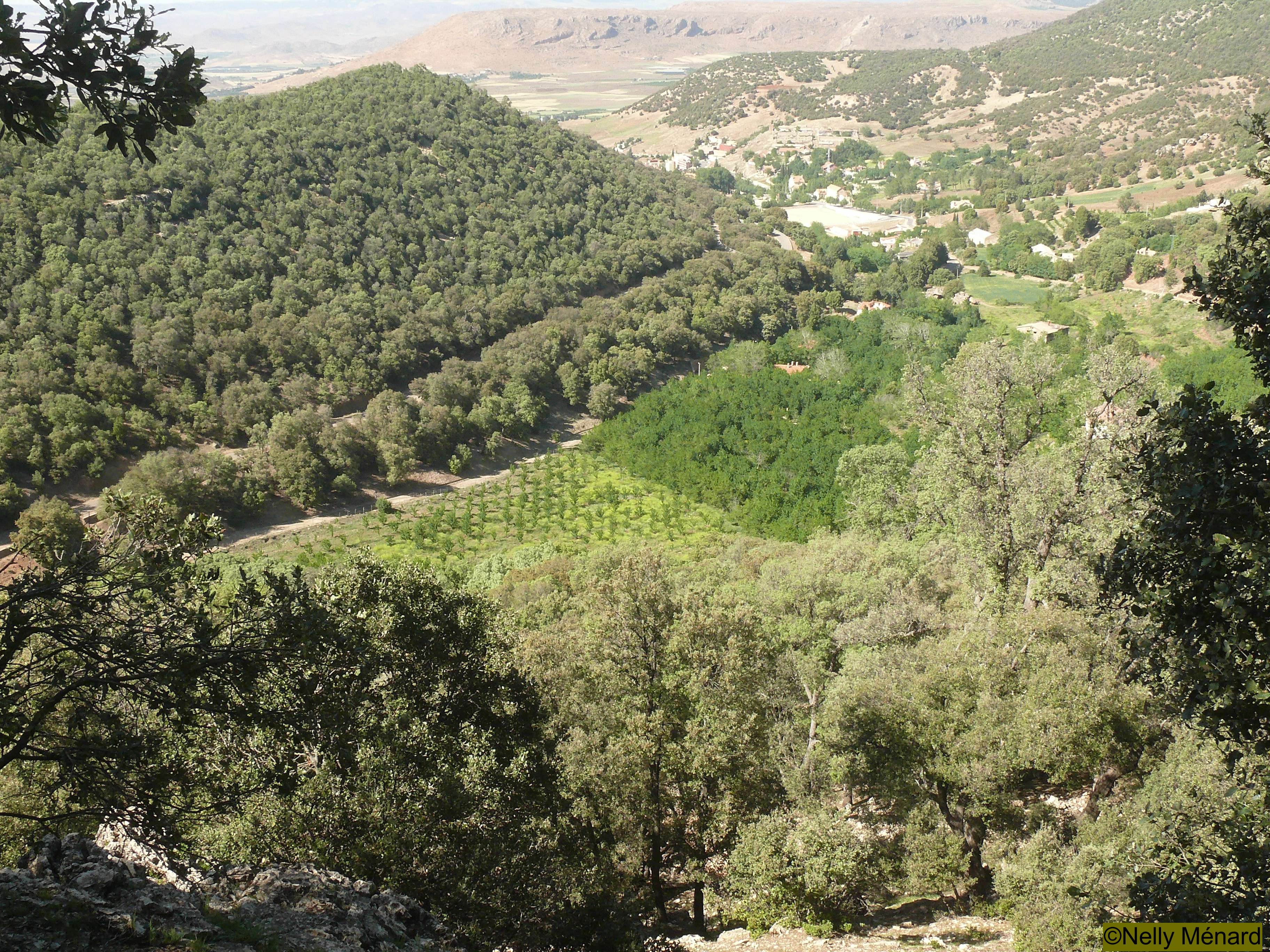
|
|
| Research:
|


|
|
Barbary macaques (Macaca sylvanus) ecology in agricultural landscape
|

Fruit tree plantations on the edge of holm oak forests
The transition zones between the natural habitats of species and those modified by humans are increasingly shrinking.
Due to recent profound agricultural changes in Morocco, the Barbary macaque is currently affected the progressive conversion of forest]adjacent
lands into crops (mainly orchards). Groups that live on the edges of agricultural areas include high proportions of cultivated foods in their diets
and are subject to frequent disturbances during encounters with humans and their dogs. They spend more time eating and less time resting
than undisturbed forest groups that do not have access to crops. Groups in agricultural lands have smaller home ranges, shorter daily path length,
and much higher reutilization of sleeping sites than natural groups. The use of cultivated areas offers advantages in reducing energy expenditure
while increasing foraging efficiency. However, encounters with humans are often aggressive, stressful, and potentially induce
costs including risks of injuries. However, contrary to what was expected and what is often mentioned in the literature for other primates,
females venture into these cultures with their young in the same way as adult males. This risk-taking suggests that the benefits brought
by cultivated foods exceed the costs induced by these risks. On the human side, dissuasive measures,
such as the use of slingshots against the macaques, were more effective before the macaques entered the crops, at the edge of the forest,
than if the confrontations took place inside the orchards. Once inside the orchards the macaques took refuge in the fruit trees, in which they remained stuck.
This situation generates human/macaque conflicts whose impact, in terms of demographic costs,
remains to be specified as well as the threat to the conservation of the species.
My researches contribute to the ANR project
COHUMAG
(2022-2026) lead by Pascaline Le Gouar (MC UMR ECOBIO, University of Rennes): "Understanding the spatial reaction norms of humans
and Barbary macaques to engineer new solution for sustainable coexistence".
more
 & &

|
Partenaires
Agence Nationale des Eaux et Forêts, Rabat, Maroc
Ecole supérieure de Technologie, Université Ibn Tofail, Kenitra, Maroc
Ecole National Forestière d'Ingénieurs, Salé, Maroc
UMR ESO, Institut agronomique Rennes-Angers
UMR LBBE, Université de Lyon
AAP Maroc, Animal Advocacy and Protection, Almere, Pays-Bas
|
|
Ecology of peri-urban Barbary macaques
|

Urban expansion may lead wild animals in contact with cities. This is the case of Barbary macaques living in the Gouraya National Park in Algeria.
Those monkeys have begun to colonise the peri-urban areas of a big city (Bejaia).
In addition, they lives in a relictual costal habitat that constitutes about 0.6% of the species range.
Our study shows that Gouraya macaques, compared to those living in mountaineous forest types of the distribution area, are under lower seasonal constraints
and consume a greater amount of fruits and seeds that are available throughout much of the year. They also consume more human foods and exotic plants provisioned
in urban zones (near houses or in private gardens), which is associated with human/macaque conflicts.The diet flexibility of the species may help it to adapt
to this relictual habitat or to cope with urban expansion.
We recommend applying management actions to restore macaques back to their natural habitat.
more

|
Partners
Laboratoire Ecologie et Environment, Université Abderahmane Mira, Bejaia, Algérie
Laboratoire Ecologie Végétale, Université des Sciences et Technologie Houari Boumediene, Alger, Algérie
Parc National de Gouraya, Bejaia, Algérie
|
|
|
|

